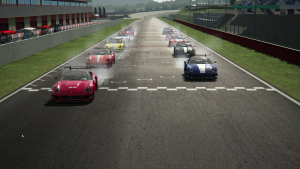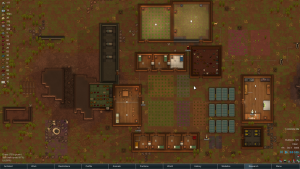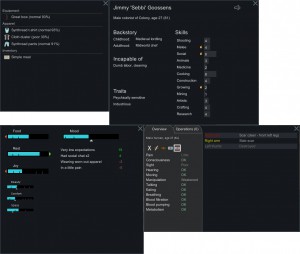The demand for a decent AI
During my ongoing literature review I often discover interesting facts about things I’ve never thought about. Sometimes I can connect these facts with my own observations: The result is mostly a completely new idea why things are as they are. Maybe these ideas are new to you, too. Therefore I’ll share my new science based knowledge with you!
This week: This time, I think about the huge impact of the AI on the user experience and discuss some of the major issues an AI can have.
In single-player computer games, enemies and competitors are controlled by an artificial intelligence (AI). Depending on the type of the game, the AI executes a certain strategy and tries to flank or outperform the player in order to ultimately put the player’s skills to a test. For this purpose, the strength of the AI is determined by the chosen difficulty level as beginners are more likely to make mistakes than expert players. In the end, the AI greatly affects the user experience as a weak AI does not challenge the players resulting in boredome whereas an overpowered AI is often regarded as unfair resulting in anxiety.
This makes the AI to one of the most complex elements of a computer game as it has to recognize the player’s actions and react to them accordingly. In addition, the AI needs a realistic situational awareness in order to provide the players with an authentic challenge and feedback. For instance, the AI should recognize if the player takes out an enemy who was talking to a different enemy. Just letting the untouched enemy walk away feels unrealistic. The same thing applies to a situation when the AI is able to recognize a hidden player over a long distance. It feels unnatural if enemies suddenly start to attack the player just because a certain threshold was crossed.

Assetto Corsa
Lastly, it is very important that the AI recognizes and respects a player. This is especially important when the AI’s purpose is to create a field of competitors instead of enemies. In a competitive environment, the player expects a gentleman-like behavior that demonstrates a certain strengths wihout being disrespectful to the player. The best example for a poor implementation of a competitive AI is the AI used in Assetto Corsa. The virtual race drivers have a poor recognition of the player’s position on the race track and, as a result of this, they constantly run into the player’s car or even push the player off the racetrack. In a competitve envrionment, this behavior seems to be disrespectful thus resulting in a negative user experience. A good competitve AI would have a well adjusted performance as well as the function to recognize and respect a player’s presence.
In sum, the AI creates challenges for the players by recognizing a player’s actions and reacting to them. In order to have the desired effect, the AI has to have a human-like behavior that is not too overpowered and not too weak. In addition, the AI has to respect the player in order to reduce frustration. In the end, the AI has a huge impact on the user experience and can influence the success of a game.





